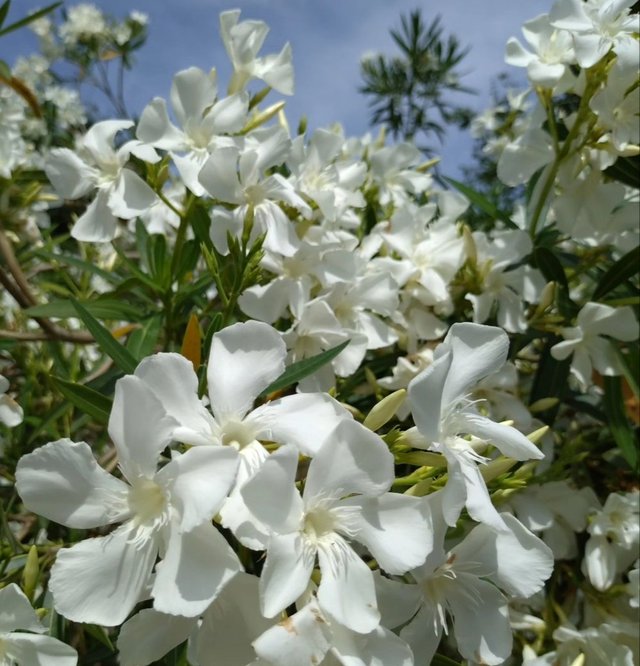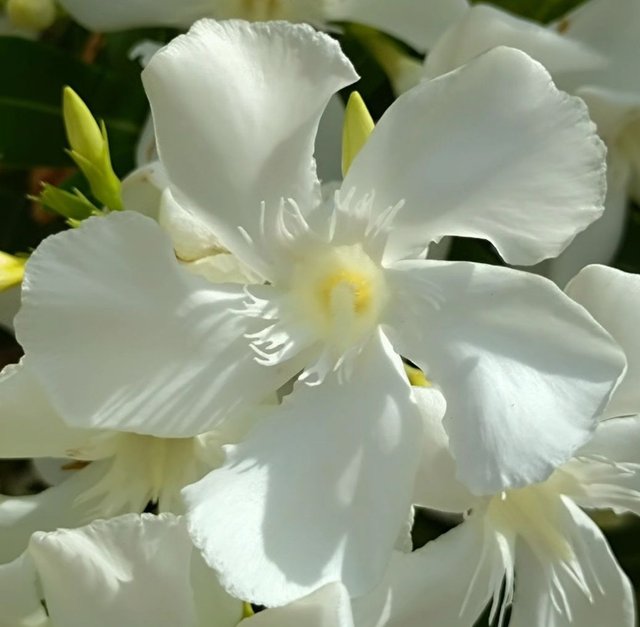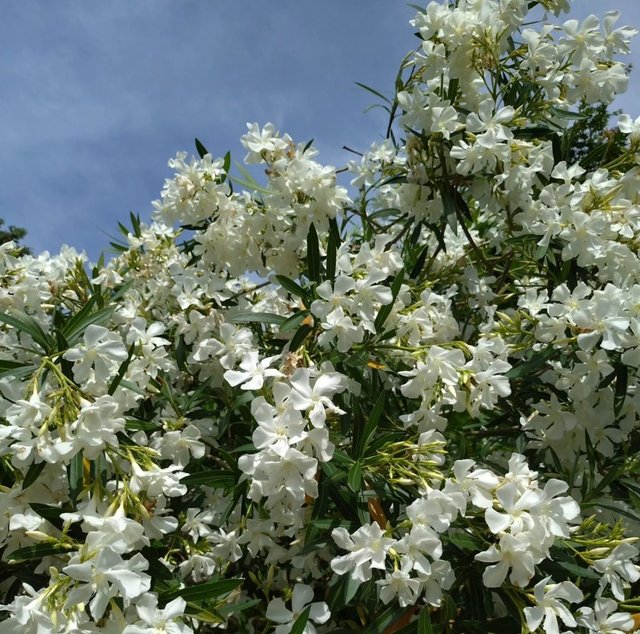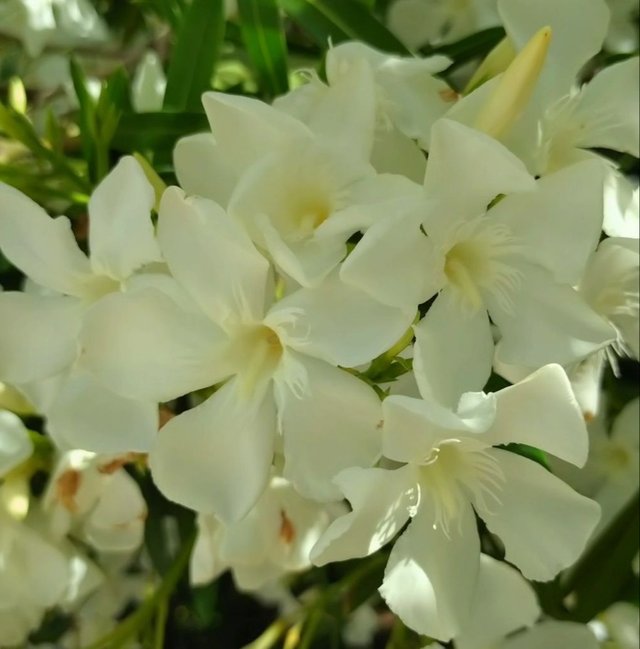Wonderful White Colour Oleander Flower
Oleander: A Beautiful Yet Deadly Plant
Introduction
Oleander, scientifically known as Nerium oleander, is a strikingly beautiful shrub commonly found in gardens and landscapes around the world. Known for its lush, evergreen foliage and vibrant, showy flowers, oleander is both admired for its beauty and feared for its toxicity. This plant has a rich history and complex biological profile, making it a subject of fascination and caution.
Botanical Characteristics
Oleander is a member of the Apocynaceae family, which includes a variety of other ornamental plants. Native to the Mediterranean region, oleander thrives in warm climates and is highly adaptable, often found in coastal areas, riverbanks, and urban landscapes. The plant typically grows as a dense, bushy shrub or small tree, reaching heights of 2 to 6 meters.
The leaves of oleander are thick, leathery, and lance-shaped, usually arranged in pairs or whorls of three. The flowers, which bloom from late spring to autumn, come in an array of colors including white, pink, red, and yellow. These flowers are not only visually appealing but also highly fragrant, attracting a variety of pollinators such as bees and butterflies.
Toxicity and Poisonous Components
Despite its ornamental appeal, oleander is notorious for its toxicity. Every part of the plant—leaves, stems, flowers, and even the sap—contains potent cardiac glycosides, primarily oleandrin and neriine. These compounds interfere with the sodium-potassium pump in cardiac muscle cells, potentially leading to severe cardiac disturbances and even death if ingested.
Symptoms of oleander poisoning can vary depending on the amount ingested and the individual’s sensitivity. Common symptoms include nausea, vomiting, abdominal pain, diarrhea, irregular heartbeats, and visual disturbances. In severe cases, it can cause lethargy, tremors, seizures, and fatal cardiac arrest. Both humans and animals are susceptible to oleander poisoning, making it a significant concern for pet owners and livestock farmers.
Historical and Cultural Significance
Oleander has been cultivated and admired since ancient times. The ancient Romans and Greeks were known to use oleander in their gardens for its aesthetic value. However, they were also aware of its toxic properties. Historical texts suggest that oleander was sometimes used in assassinations and as a means of pest control.




Thanks For Reading
Device Information
| Device | cannon eos 600D |
|---|---|
| Lens | 55-250 zoom leans |
| Location | Myanmar |
